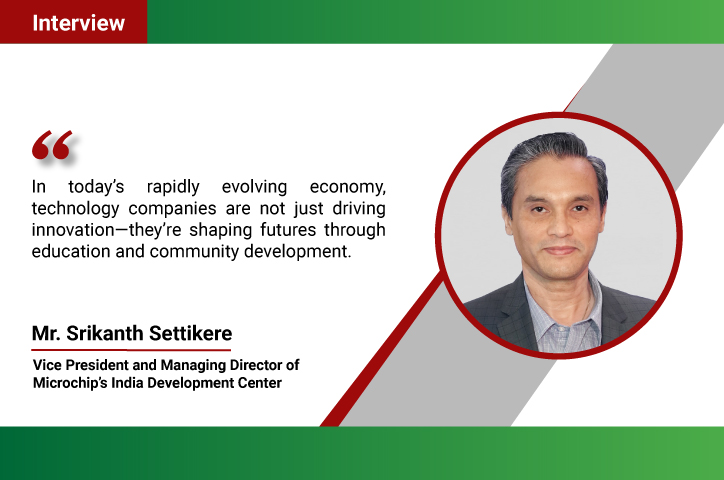Dr Sebanti Ghosh is a public health and nutrition expert, with more than 20 years of experience in the health and development sector. She is the Country Program Director of Alive & Thrive India, a global nutrition initiative to save lives, prevent illness, and ensure healthy growth of mothers and children. The organisation works in countries including Ethiopia, Bangladesh, Vietnam, India and Nigeria. In this interview with TheCSRUniverse, she talks about the state of malnutrition in India and how it can effectively be dealt with a proper implementation strategy.
Q: How big is the problem of malnutrition in India and why is it important for the country to fight malnutrition on a priority basis?
A: High burden of malnutrition persists in India, with considerable variability across districts and states and variable improvement across states. Stunting and malnutrition rates went down by close to 10 percentage points between 2005 and 2015, with higher than average declines in some states. But ,as per Comprehensive National Nutrition Surveillance (CNNS), 2016-18 one in three children under five years remained stunted(34.7%), one in three underweight(33.4%) and one in five wasted; and as per National Family Health Survey (NFHS 4), 2015 -16, one in five babies were born with low birth weight and one in two women of reproductive age are anaemic. More than one-fifth (22.9 percent) of all women in India aged 15–49 yrs and 2 in 5 adolescent girls (15-19 years) are undernourished, with a body mass index of less than 18.5. Those averages mask considerable inter- and intra-state variability.
Prevalence of malnutrition remains notably above average across Northern states, while stunting prevalence varies across districts from as low as 12% to as high as 65% . The coverage with key nutrition interventions remain below desired level with 1 in 2 children (0-5 months) exclusively breastfed and only 1 in 10 children (6-23 months) receiving adequate diet, while only 30% pregnant women consume 100 + Iron and folic acid tablets (NFHS 4).
Combating malnutrition not only improves survival (reduction in mortality) and well-being(reduction in morbidity), it constitutes the foundation of human development required to achieve full physical and cognitive potential that further translates into enhanced learning capacities and increased productivity. Nutrition investment is acknowledged as one of the most cost effective entry points for human development, poverty reduction and economic development. The economic case is compelling for India as economic analysis shows it stands to gain US $ 34 for every US $1 invested in nutrition programming.
Research undertaken by A&T and published in the Health Policy and Planning Journal in June 2019 has quantified the economic toll that inadequate breastfeeding takes on individuals, communities and countries. The total economic cost of not breastfeeding in India is estimated to be US$ 14.5 billion (over Rs 9000 Cr), or 0.7 percent of Gross National Income (GNI), if we add the estimated costs related to child and maternal mortality, health system costs of treatment of cases of childhood diarrhea and pneumonia and type II diabetes in women, household cost of breast milk substitutes and the cost of cognitive losses.
Q: Do you think India is on the right track to eradicate malnutrition? Please explain.
A: India has a favourable policy environment with evidence based policies and programme guidelines for nutrition in place but effective implementation especially at the last mile has been a challenge along variations in implementation across states.
The Poshan Abhiyaan has raised the profile of nutrition as a top priority of the GoI and reflects strong political will and commitment for addressing the malnutrition burden. It was launched as a flagship programme of the Prime Minister to improve coverage of nutrition services and benefits and to drive improvements in maternal infant and young child nutrition outcomes across the country at an unprecedented scale. It rightly focuses on the key window of opportunity of the first 1,000 days of life (starting from conception through pregnancy till the first two years of a child’s life). The five pillars of multi-sectoral convergence, use of technology, capacity building, behavior change communication and incentives have set the foundation of a system strengthening agenda. The Poshan Abhiyaan also strives to build a "people’s movement" (or Jan Andolan) against malnutrition across the country.
Some key achievements from 2018 to 2020 included the roll-out of a technology platform (the Common Application Software [CAS]) to support FLWs with service delivery, of a national Integrated Child Development System (ICDS) FLW training programme (the Incremental Learning Approach [ILA]), and the organization of community-based events to assist communities and families adopt new nutrition behaviours. Considering the high burden of persisting anaemia in India’s women and children, an intensified strategy of Anemia Mukt Bharat has been also launched in 2018, focusing on both systems strengthening approach to deliver and monitor evidence based measures and social & behaviour change approaches to ensure uptake of services and adoption of optimal behaviours.
Addressing malnutrition requires multi-sectoral approaches to tackle the multiple factors and determinants of nutrition. Indeed, the convergence of the interventions prioritized by the Poshan Abhiyaan with multiple sectors—health & family welfare, women and child development, education, rural development, clean energy, growth, and water, sanitation and hygiene—has the potential to reduce stunting by 18 percentage points and underweight by 20 percentage points .
Evidence tells us that for bringing about change in nutrition outcomes, evidence based interventions need to be delivered with high coverage, continuity (over the first 1,000 days of life and across delivery channels), intensity (or frequency of interactions) and quality. Integrated service and benefits delivery at the household level is critical to impact. Improvements in effective nutrition service delivery at scale are significantly associated with the implementation of systems strengthening interventions targeted at frontline nutrition and health workers: capacity building, supportive supervision, incentives and supporting mass media activities.
Momentum for nutrition system strengthening must be prioritized and sustained at policy and programme level. Increased focus is needed to improve the coverage of nutrition and health service with quality and last mile convergence of nutrition & health services and benefits delivered through the government system
Q: Do you think the problem of malnutrition has aggravated due to Covid-19 and the lockdown imposed to restrict the spread of virus?
A: The COVID 19 pandemic has the potential to aggravate the existing burden of malnutrition in India as the pandemic and lockdown has created major disruptions in livelihoods and access to food, increased risks of food insecurity and adversely affected the delivery and use of essential health and nutrition services. Reduction in coverage has been noted for crucial services like antenatal & institutional delivery care, immunization, provision of micro nutrient supplements like iron and folic acid tablets & calcium tablets to pregnant women, nutrition counselling, growth monitoring & promotion services for young children to identify undernourished children and treatment of severely acute malnourished children. The health system is overburdened with the need to manage the pandemic and provide necessary services. Several of the northern states in the country had weak health systems in pre-COVID scenario and thus are further challenged in the current times. Health care workers have been struggling with multiple responsibilities, adapting to new ways of service provision, knowledge & skill gaps created by pandemic as well as stigma and discrimination.
THE LANCET GLOBAL HEALTH IN JULY 2020 ESTIMATED THAT GLOBAL PREVALENCE OF CHILD WASTING COULD RISE BY A SHOCKING 14.3% IN 2020.
With the loss of livelihood or income cuts, families of pregnant and young children esp. from vulnerable population groups have faced acute disruptions in food systems with reduced access to safe and nutritious food. They have been compelled to resort to nutrient poor options. Fears and misconceptions about breastfeeding led to mothers and families not feeling confident to breastfeed and fall in breastfeeding rates, depriving our children the optimum nutrition which is vital for health and well-being. Inappropriate promotion and use of breast milk substitutes and baby food has further aggravated the problem. Families of pregnant women and children face apprehensions to seek health care like antenatal care, immunization, delivery care, treatment of childhood illnesses due to fear of infection and also faced issues with lack of or limited public transportation resulting in unsafe deliveries at home, and enhanced risk of infections/diseases and sickness.
The adverse impact worldwide with The Lancet Global Health in July 2020 estimated that global prevalence of child wasting could rise by a shocking 14.3% in 2020.
4- India conducts a family health survey after every four years which is again not regular. How important is the data when it comes to fighting with the nutrition crisis? What are your suggestions for improving the data quality regarding malnutrition?
Strategic use of data is crucial in our efforts to combat malnutrition. Apart from periodic surveys like National Family Health Survey IV, routine programme data as generated by the health and nutrition system is key to track progress of the efforts made to achieve the targets on a continuous basis and take corrective actions. The polio eradication and HIV programmes have demonstrated the importance of strategic use of data to drive continuous improvements in programme performance.
The rollout of CAS by MWCD has greatly improved availability of data on provision/uptake of nutrition interventions on a real time basis and is well complemented by the health management Information System (HMIS) which also captures some of the critical l nutrition interventions. What we need is building a culture of using data at all levels in the system especially at the frontline worker level to drive facilitative actions to support and improve programme delivery. We need to move away from using data for punitive measures. Improving accuracy, timeliness and quality of data generated is essential to inform decision making for programme improvements. Frontline nutrition and health workers need to be capacitated and provided mentoring support by supervisors for improving quality of data collected, collated and in analysis of same. One missing link is that quality of nutrition service delivery is not systematically tracked and this requires prioritization.
















.jpg)




